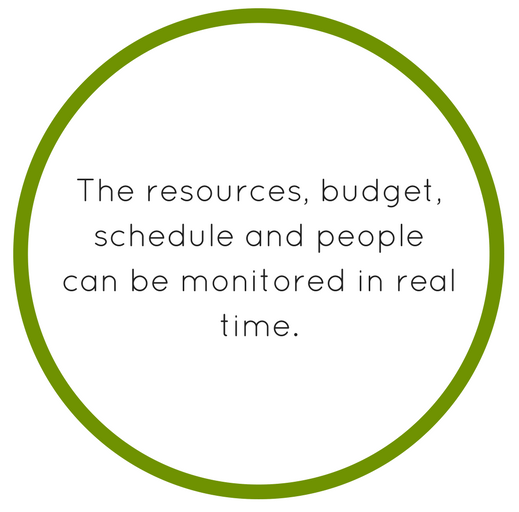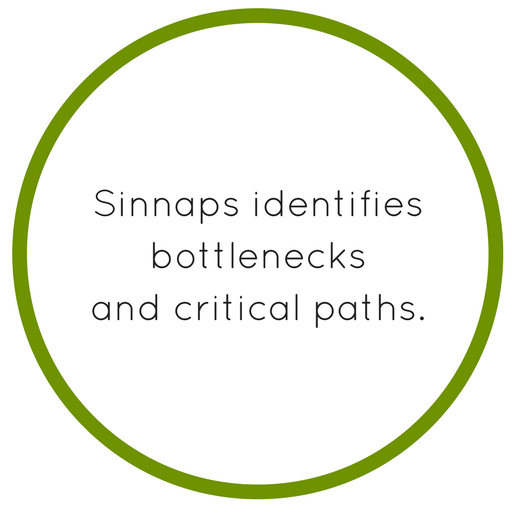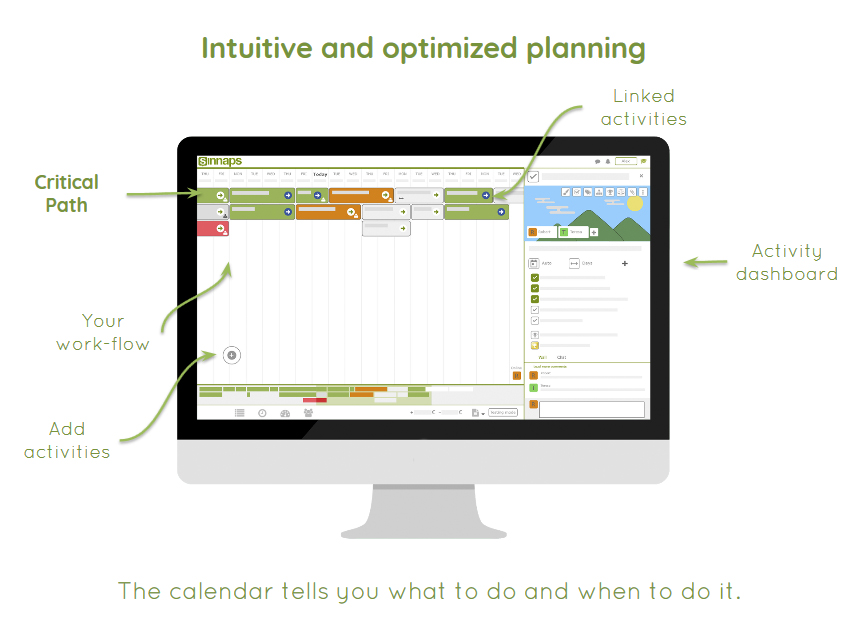Project Planner Scheduler. Whether your project is big or small, easy or complex, it needs to be scheduled. Scheduling is a form of planning and organising your project in the best way to ensure successful results. Imagine going into a project blind! Little success would be reached. A lot of people would be confused, and valuable time would essentially be wasted. In this article you will learn about what scheduling is, its importance and the various tools associated with project scheduling.
Índice
What is Scheduling?
Scheduling is about determining when your project will start, when each of the tasks that are part of the project will begin and end and assigning the appropriate resources to the tasks. It communicates the work that must be performed to team members and the timeframe within which is should be completed. Without an effective schedule, it would be hard for project managers to communicate with stakeholders what the project will look like and would create a serious amount of uncertainty.
A project planning app, such as Sinnaps, allows managers to efficiently track their project’s progress. The resources, budget, schedule and  people can be monitored in real time. A schedule can be consulted at any time and updated if needs be. It helps in identifying future potential threats and bottlenecks and gives scope for effective preparation.
people can be monitored in real time. A schedule can be consulted at any time and updated if needs be. It helps in identifying future potential threats and bottlenecks and gives scope for effective preparation.
Every project planner scheduler starts with a Work Breakdown Structure. Ultimately, the WBS reflects all of the work to be completed in a project in a hierarchical manner. The work to be done and the tasks to be completed are known as deliverables. All stakeholders to a project benefit greatly by seeing the WBS which serves as a roadmap and project time plan.
Commonly, a WBS is started off at the highest level which normally pinpoints the product of the project. If you are involved as a project manager in a new product packaging design project for a food store, for example, and you are responsible for designing the packaging of a new cereal, the product of the project will be increasing the cereal sales by 4%.
After identifying the project deliverables, the tasks can be performed with the intention of achieving Deliverables are not always physical products. They can be actions that need to be performed. Scheduling allows for more certainty in project management for every person involved. Similar to a real-life situation, projects that are scheduled correctly, perform on average, a lot better than those that are not. Imagine trying to reach a destination without a map, well, a project schedule serves projects in the same way.
What is a Project Planning Calendar?
A calendar plans out your days, if you are using it personally. A project planning calendar does essentially the same thing, however for your projects following a project management sheet. It plans out the days of your project. Within these days are included your project’s tasks and resources panned across a visualisation of a timeline that is easy to follow by all stakeholders. It is a useful tool and essential in good planning.
A project management calendar may seem straight-forward. It is a very efficient tool in scheduling your projects. A project planning calendar allows for the organisation of all the tasks and goals of your projects. Online calendars can be created and updated in real time. The duration of each task is shown as are the dependencies of the tasks. Online calendars allow for the addition of notes or live in-chat features which can be found on project management software such as Sinnaps.
A project calendar template is available in Sinnaps, the project planning app. There are different calendar templates and even any project schedule sample from the Sinnaps community that can be exported to excel and modified to the specific requirements of your project.
Start managing effective projects!
Resource Scheduling in Project Management
Resources are what projects are run on. They can be human or financial and are part of every project. Scheduling these resources is an important step in project management. Resource availability and the work capacity of the people involved essentially determine a project’s deadline. Along with managing resources come expected completion dates and task assignments. Stakeholders often ask to see the resource schedule as it is a determining factor in future project progress.
There are several resource scheduling steps, some of which include:
- Task list: Having a list of tasks and jobs that have to be completed with an estimated duration and effort. This estimation can be outlined as hours, days or even the percentage of occupation.
- Identification of constraints: Constraints are important to identify in order to understand what needs to be done. A constraint can be a deadline, a specific set of skills required, a location where the task needs to be completed etc.
- Identification of needs: Each task to be completed in a project will need a different amount of resources which is expressed as the resource demand. It is important to note the type of resource required for each task whether it is people, machines or money.
- Controlling capacities: This is done mainly to motor the future availability of resources. This can be done for resources such as rooms, people, equipment etc. In terms of people it is important to control capacity in aspects such as planned absences, their workload new employees, time-off and the forecasted workload.
- Matching resources with tasks: This is about scheduling resources with their respected tasks and activities. Resources can be in high demand during a project but in low capacity. Understanding this during scheduling will allow project managers to delay certain tasks until that resource is freed up. Adequately forecasting resource capacity allows for more effective scheduling.
Project Tracking Tools
Tracking your project’s progress is an important part of project management. Keeping up to speed with how your project is going is essential to its later success. There are a number of online project management tools available that help track your project’s progress. Some of the most prominent are listed below:
- Gantt Chart: A Gantt chart serves as a visualisation of the project’s schedule. It plans out all of the tasks in order along a timeline, allowing everyone involved to understand what is expected and when. It can also include a critical path containing all of the tasks that are critical to the project’s completion. The task interdependencies are also clearly shown so that members know what tasks are dependent on others’ completions.
- KPIs: KPIs or Key Performance Indicators are tools that measure the project’s use of resources, both human and financial, budget and time. These indicators show clearly what is being used, by whom and what relevance it has to the project’s progress and if it is keeping to the original schedule.
- Report Generators: Reports are an essential part of project management and are usually drawn up by the project manager. Depending on the project, there could be a lot of reports and documentation involved. Tools such as a report generator greatly optimise the task of reporting through the provision of templates that can be filled in rather than a document being drawn up from scratch.
- Milestones: Milestones are key points in a project during which important activities are reached and completed. Milestones need to be completed so that the rest of the project can go on. Reaching milestones is an important part of project management and helps to break up a project into smaller, more manageable chunks.
- Updates: Keeping everyone involved in a project up to date is key to a successful project. Tools such as weekly updates allow for members and managers to be updated automatically on the progress of the project. This allows members to see if there is anything that needs specific attention or if anything is falling behind so that it can quickly be seen to and not veer off schedule too much.

How to Create a Project Plan with Sinnaps
Scheduling your project effectively couldn’t be easier with the project management software Sinnaps. Sinnaps includes a number of essential tools used in scheduling a project. The benefits of using software to schedule your project include: automatic calculation of the critical path, constant updates, time-saving and the fact that it is cloud-based, meaning none of your data will be lost.
Sinnaps understand the importance of planning and keeping track of your project so you can stop worrying about how to make a project plan. The online app presents an effective and efficient way to plan your projects on an updated version of the traditional Gantt Chart known as the Gantt-flow.
 The Gantt-flow is a platform where a project team can input the tasks that form part of the whole project. Task relationships and interdependencies are clearly outlined for all involved to consult. Team members and resources are assigned to each task and bottlenecks are identified. This is mapped out across the timeline (a project timeline example can be found on Sinnaps) of the project and serves as its visualisation- a useful tool for project managers, members and other stakeholders to follow. Project management sample projects are also available through templates from other Sinnaps users. You can schedule your project in the same way as other successful Sinnaps users.
The Gantt-flow is a platform where a project team can input the tasks that form part of the whole project. Task relationships and interdependencies are clearly outlined for all involved to consult. Team members and resources are assigned to each task and bottlenecks are identified. This is mapped out across the timeline (a project timeline example can be found on Sinnaps) of the project and serves as its visualisation- a useful tool for project managers, members and other stakeholders to follow. Project management sample projects are also available through templates from other Sinnaps users. You can schedule your project in the same way as other successful Sinnaps users.
The critical path of the project which includes the most critical and important tasks to the project’s completion. The critical path is easily traceable across the top of the Gantt-flow.. Sinnaps calculates automatically the project’s critical path using PERT and CPM technologies, scheduling effectively the most important parts of your project. A project execution plan template can show you exactly what a critical path looks like and how it greatly serves your project’s process.
Communication that is open and clear is a crucial part of project management throughout and is especially vital during the planning stage of the project. Sinnaps takes this aspect into consideration by the creation of live in-chat features and a project wall where members can consult any changes or addition that have been made to the project management project plan. Weekly updates on the project’s progress are also sent to team individuals through e-mail to make sure they are kept up to date with progress and notified of any changes.
Project management samples are available to be used if you are unsure as to where to begin with scheduling your project. You can use the templates that the Sinnaps community provides. You can export these templates to excel and edit them to your project’s own specific requirements. In the long-run, a successful project calendar template could save you crucial time in the future.
Key performance indicators (KPIs) are also included on the platform that measure resources, budget and time. This allows for members and the project manager to consult the indicators and judge project progress, making sure that the project is sticking to schedule.
Overall, it is clear that scheduling is an important aspect to project management. Without a schedule many stakeholders would be unaware of what is happening and when. Without appropriate scheduling, which is optimised by project scheduling software such as Sinnaps, there would be major scope for disorganisation, conflict and project failure. Scheduling your project is not a waste of time and should always be done as part of the project planning process.

Here at Sinnaps, we love hearing your opinion and helping you in any way we can. Be sure to give this article a like if you enjoyed it and feel free to leave a comment with any questions or opinions that you have! 😊
Some recommendations…
Project Management Plan Template

